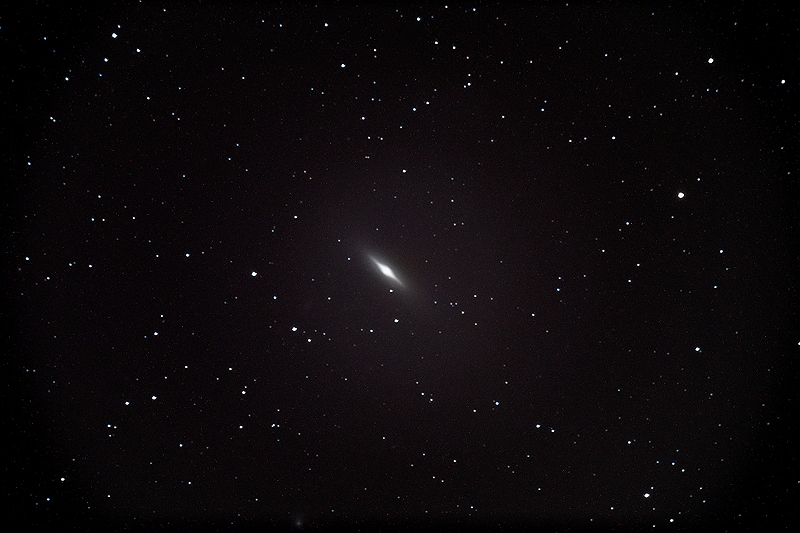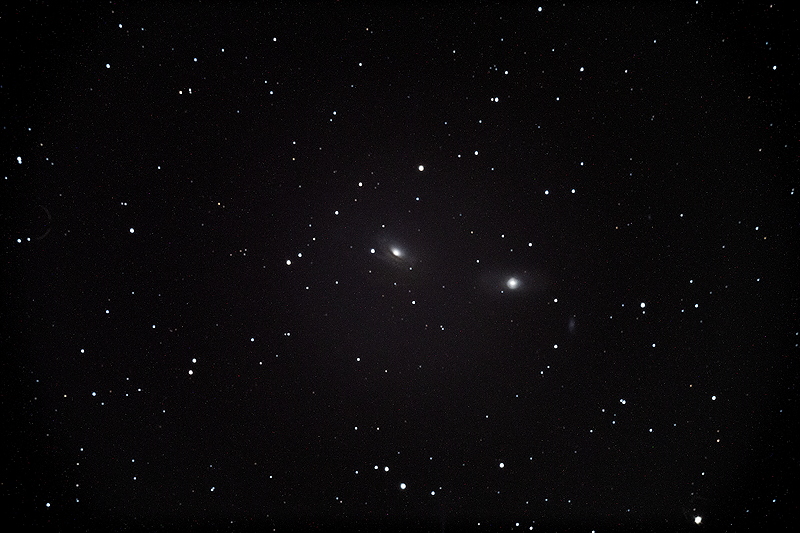Orion iPhone piggyback;
D850 DSLR Galaxy Imaging
Posted: 26 April 2019
Clouds returned Thursday afternoon, 18 April 2019, and continued until Saturday, 20 April. Unfortunately I had come down with a bad cold a few days earlier and had to cancel helping out at the Oracle State Park, our local IDA "International Dark Sky Park", Earth Day celebration all day on Saturday and a star party that night. It was the first time I've had to miss a star party at the Park since I began volunteering there in 2014. Cloudy skies returned on Monday, 22 April. The sky finally cleared on Wednesday, 24 April, but I did not open the observatory that night as I attended an important community meeting to discuss possible Light Pollution impacts from a large proposed transmission line project passing near Oracle. A Tucson TV station covered the event and I was interviewed on-camera. I did open the observatory Thursday, 25 April.
|
Open: Thursday, 25 April 2019, 1815 MST Temperature: 98°F |
Session: 1346 Conditions: Clear |
Equipment Used:
12" f/8 LX600 w/StarLock
2" 24mm UWA eyepiece
Camera:
iPhone 8 Plus
D850 DSLR
After arriving at the observatory I SYNCed the observatory clock to WWV time signals.
I then prepared the LX600 for some new product testing.
1904 MST: sunset.
1905 MST: LX600 ON, StarLock OFF, High Precision OFF.
Slewed the 12" telescope to the star Rigel. Tweaked the finderscope alignment.
While waiting for the sky to get darker I prepared the D850 DSLR for prime focus imaging for my Extragalactic Supernova Project.
Mounted the iPhone 8 Plus piggyback on the 12" LX600 to photograph setting Orion using the iPhone front camera.
2003 MST: StarLock ON.
This is a 1 minute StarLock autoguided image of Orion and Canis Major (at left). It was taken using NightCap Camera (ISO 8000, 1/2sec). I used the Phone Skope Bluetooth remote.

This was the first time I had used the iPhone front camera for astrophotography.
2016 MST: StarLock OFF.
Removed the iPhone and mounted the D850 DSLR at prime focus, focused on the star Procyon, and locked the 12" mirror mirror.
2033 MST: High Precision ON. 2035 MST: StarLock ON.
Took the following StarLock autoguided, 5 minutes exposures, ISO 6400, White Balance 5000K, images of galaxies:
NGC3115

NGC3169 and NGC3166

NGC3079

NGC3147

NGC3184

2156 MST: StarLock OFF, High Precision OFF.
Ended imaging. Removed the camera. Viewed the galaxy NGC3184, 102X.
2206 MST: LX600 OFF.
|
Close: Thursday, 25 April 2019, 2217 MST Temperature: 67°F |
Session Length: 4h 02m Conditions: Clear |
The Tucson Amateur Astronomy Association (TAAA) has published info about my talk on Friday, 3 May, 6:30pm MST. Here is what they sent out to their membership:
Location:
Kuiper Building, 1629 East University Blvd. Third Floor Auditorium (Room 308).
Kuiper Building is located between Flandreau Science Center and UA School of Dance. About two blocks south and east of Steward. Parking available in same locations as previous meetings, but about two or three blocks further to walk.
The Announcement:
Observatory Opportunity:
Some members have expressed an interest in information about building or running a personal observatory. At the May 3rd 6:30 meeting TAAA will begin a series of opportunities for you to share what some TAAA members have learned regarding personal observatories. In this first opportunity, Michael Weasner will discuss what he has learned in building and running the Cassiopeia Observatory in Oracle, AZ.
Michael will provide an additional learning experience with an open house for Members. Any TAAA Members who wish to attend are invited to the Cassiopeia Observatory at 10:00 am on Saturday, May 4th. The visit is designed not for the purpose of observational viewing but for the purpose of being able to take a day-time look at the design and construction as well as to answer more close-up and member-specific questions about construction and use of the observatory. Maps and directions will be provided at the 6:30 May 3rd meeting.
Comments are welcome using Email. Twitter users can use the button below to tweet this report to their followers. Thanks.
Cassiopeia Observatory Home Page
Copyright ©2019 Michael L. Weasner / mweasner@me.com
URL = http://www.weasner.com/co/Reports/2019/04/26/index.html
